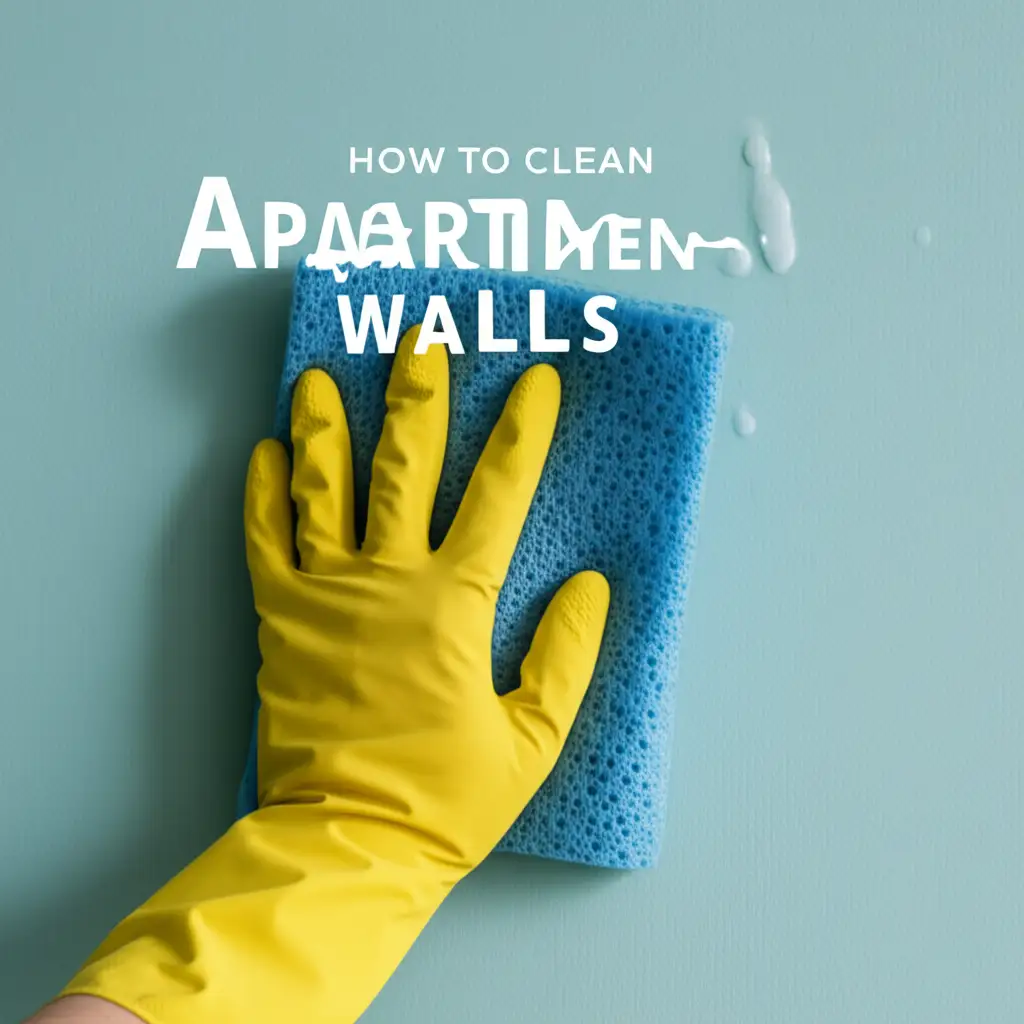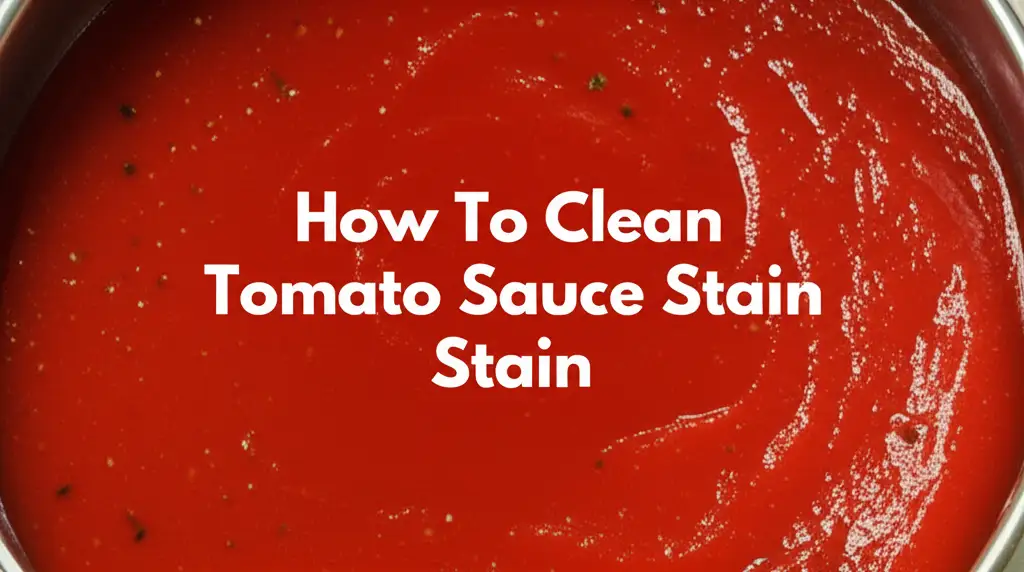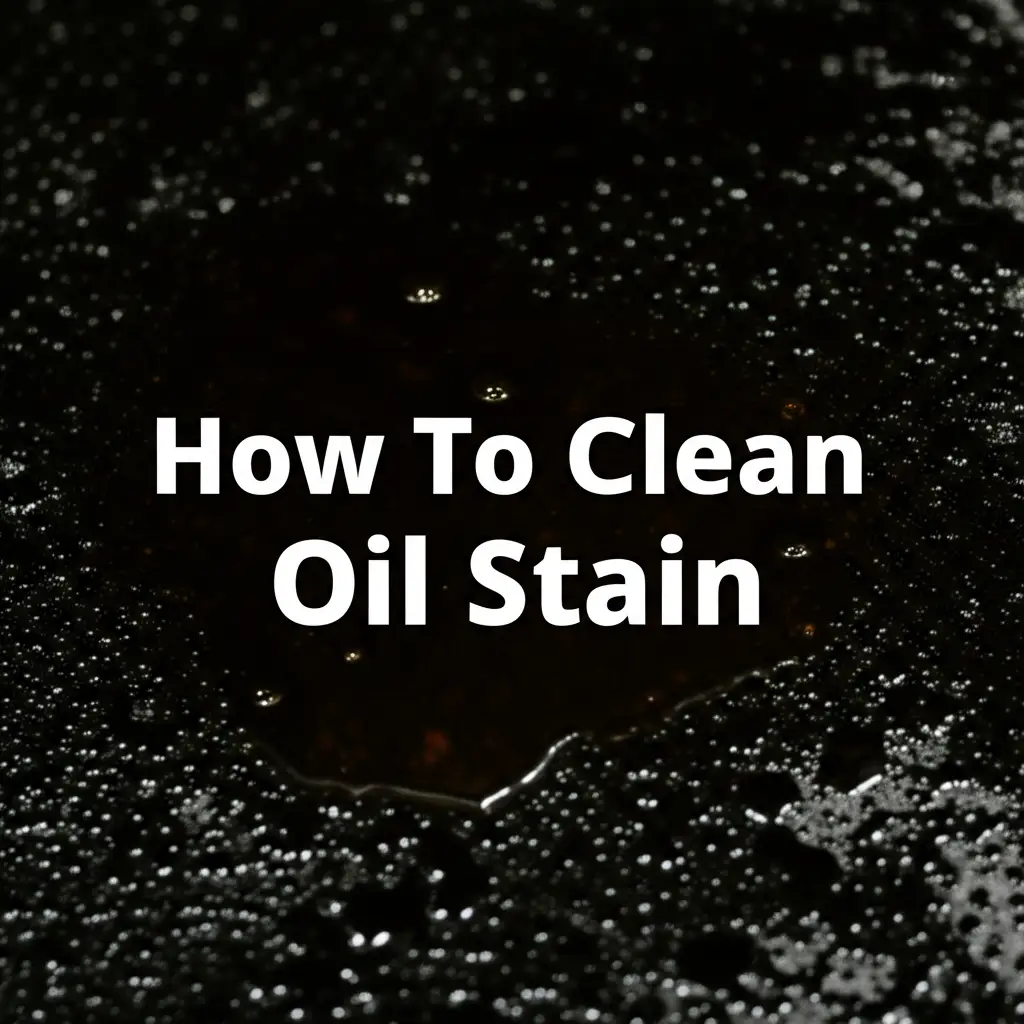· Apartment Living · 18 min read
How To Clean Apartment Walls

Restore Your Apartment Walls: A Complete Cleaning Guide
Are your apartment walls looking a bit dull? We all know walls can gather dust, grime, and even mysterious marks over time. Cleaning apartment walls keeps your home fresh. It also helps you get your security deposit back when you move out. I have helped many people make their walls look new again. This guide provides simple steps for sparkling walls.
This article shows you how to clean apartment walls. We will cover necessary preparations and basic cleaning techniques. We will also discuss how to handle tough stains. Learn about eco-friendly options and care for different wall types. Finally, we will share tips for overlooked areas and ongoing wall care.
Takeaway
- Gather Supplies First: Collect all tools and cleaners before starting.
- Test Cleaning Solutions: Always test cleaners in a hidden spot. This prevents damage to your paint.
- Dust Before Washing: Remove loose dust and cobwebs before wet cleaning.
- Tackle Stains Early: Spot clean marks as soon as you see them for best results.
- Clean Top Down: Start cleaning from the top of the wall. Work your way down to the baseboards.
- Protect Your Floors: Use tarps or towels to catch drips and protect flooring.
Main Query Answer
To clean apartment walls, start by dusting them thoroughly. Next, spot clean any visible marks or stains with a gentle cleaner. Finally, wash large sections with a mild solution. Use clean cloths and rinse well. Always test cleaners on a small, hidden area first to prevent damage.
Preparation is Key: Setting Up for Apartment Wall Cleaning
Before you start scrubbing, good preparation makes wall cleaning much easier. It protects your belongings and ensures a safe cleaning process. I always recommend clearing the area first. Move furniture away from the walls. Cover anything you cannot move with sheets or tarps. This protects them from water or cleaning solutions.
Gathering all your supplies beforehand saves time. You will need buckets, sponges, microfiber cloths, and a mild cleaning solution. Consider a duster with a long handle. This helps reach high spots. Always use clean tools. Dirty tools can spread grime or leave streaks.
Knowing your wall type and paint finish helps you choose the right method. Most apartment walls have flat or eggshell paint. These finishes are less durable than semi-gloss. Testing your cleaner in an out-of-sight spot is important. Apply a small amount of cleaner. Wait a few minutes. Then wipe it off. This check ensures the cleaner does not remove paint or cause discoloration. This step is especially important if you are trying to clean walls without removing paint.
- Clear the Room: Move furniture away from the walls. This gives you space to work. It also prevents accidental splashes.
- Protect Surfaces: Lay down old sheets, towels, or tarps on the floor. This catches drips and spills. Cover any furniture you cannot move.
- Gather Your Tools: Collect everything you need. This includes buckets, sponges, microfiber cloths, and a duster. Have your cleaning solutions ready.
- Identify Wall Type: Understand if you have painted, wallpapered, or textured walls. This impacts your cleaning approach. For instance, cleaning textured walls needs a different approach than smooth ones.
- Test Cleaning Solution: Always test your chosen cleaner on an inconspicuous area. A spot behind a door or inside a closet works well. This prevents damage to the paint or wall surface.
Basic Steps to Dust and De-Grime Apartment Walls
Once you prepare the space, begin with dry cleaning. Dust and cobwebs accumulate easily. They are easier to remove before wet cleaning. Use a duster with an extendable handle. You can also use a vacuum cleaner with a brush attachment. Start at the top of the wall. Move the duster in downward strokes. Pay attention to corners and ceiling lines.
After dusting, prepare your general cleaning solution. A simple mix works for most walls. Combine warm water with a small amount of mild dish soap. You can also use a commercial all-purpose cleaner. Make sure it is safe for painted surfaces. Fill one bucket with this cleaning solution. Fill a second bucket with clean, plain water for rinsing.
Dip a clean sponge or microfiber cloth into the cleaning solution. Wring it out well. The cloth should be damp, not dripping. Start cleaning at the top of the wall. Work in small sections. Wipe gently in circular motions. Avoid scrubbing too hard. This prevents damage to the paint. Rinse your sponge or cloth frequently in the clean water bucket. Then re-wet it in the cleaning solution. Continue this process down the wall. This ensures you are always using a clean cloth. For larger areas, some find it effective to clean walls with a mop designed for flat surfaces. Remember to change the water in both buckets as it gets dirty. This keeps your cleaning effective and prevents streaks. When you are cleaning walls, remember to also look up. Cleaning walls and ceilings together provides a uniform clean.
- Dry Dust First: Use a duster, broom with a cloth, or vacuum attachment. Remove all loose dust, dirt, and cobwebs. Work from top to bottom.
- Prepare Cleaning Solutions: Get two buckets. Fill one with warm water and a small amount of mild dish soap. Fill the second bucket with clean rinse water.
- Use a Damp Cloth: Dip a clean microfiber cloth or sponge into the soapy water. Wring it out well. It should be damp, not soaking wet.
- Clean in Sections: Start at the top of the wall. Work in small, manageable sections. Overlap your sections slightly.
- Gentle Wiping: Wipe the wall gently. Avoid hard scrubbing. Too much pressure can remove paint.
- Rinse Frequently: Rinse your cleaning cloth often in the clean water bucket. Wring it out. This prevents spreading dirt.
- Wipe Dry: After cleaning a section, lightly wipe it with a separate, clean, dry microfiber cloth. This helps prevent streaks and water marks.
Spot Cleaning Common Stains on Apartment Walls
Walls in apartments collect various marks. Scuff marks from shoes or furniture are common. Fingerprints, especially around light switches, appear frequently. Grease splatters from cooking can also mark kitchen walls. Addressing these specific stains requires a focused approach. My experience shows that quick action makes stain removal much easier. Do not let stains sit for too long.
For light scuff marks, a magic eraser works wonders. Dampen it slightly. Gently rub the mark. Use minimal pressure. The eraser is abrasive. Too much force can remove paint. For fingerprints and general smudges, a simple soapy water solution often works. Apply it with a soft cloth. Then wipe it clean. For more stubborn or dark marks, you may need a more direct method. Learning how to clean dirt off walls can help with many types of smudges.
Grease stains, particularly in the kitchen, need a degreasing agent. Mix a few drops of dish soap with warm water. Apply it directly to the grease spot. Let it sit for a moment. Then wipe with a clean cloth. Baking soda paste can also work for grease. Mix baking soda with a little water to form a thick paste. Apply it to the stain. Let it dry completely. Then gently brush it off. This often lifts the grease away. You might also encounter very specific stains, and knowing how to clean stains off walls generally is useful. Always rinse the area with clean water afterward. Then dry it. This prevents any residue from remaining.
- Scuff Marks: Use a melamine foam eraser (like a “magic eraser”). Dampen it. Gently rub the scuff. Test first on a hidden spot.
- Fingerprints and Smudges: Mix a small amount of mild dish soap with warm water. Wipe the area with a soft, damp cloth. Then rinse with a clean, damp cloth.
- Grease Stains: Apply a small amount of dish soap directly to the grease spot. Let it sit for a few minutes. Wipe with a warm, damp cloth. Repeat if necessary. For tough grease, a baking soda paste can work.
- Pencil Marks: A regular pencil eraser can often remove pencil marks. Use a white eraser to avoid leaving new marks.
- Crayon Marks: For crayon, try rubbing alcohol on a cotton ball. Test it first. Gently blot the crayon. You can also try baking soda paste.
Tackling Stubborn Issues: Mold, Smoke, and Deep Dirt
Some wall issues go beyond simple dirt. Mold, smoke residue, and deeply embedded grime require more focused attention. These problems often need stronger cleaners or specialized techniques. I know these can be intimidating. But with the right approach, you can make your walls clean again. For instance, knowing how to clean mold off walls is crucial for a healthy home.
Mold can be a serious issue in apartments, especially in humid areas. For small mold spots, a mixture of equal parts white vinegar and water works well. Spray the solution on the mold. Let it sit for an hour. Then scrub with a brush or cloth. For larger mold issues, consider informing your landlord. They might need to bring in professionals. Never paint over mold without cleaning it first. This traps moisture and makes the problem worse. Bleach solution (1 part bleach to 10 parts water) also kills mold. Use it with caution. Ensure good ventilation. Wear gloves and eye protection.
Smoke residue leaves a sticky, yellowish film. This film smells bad. Cleaning smoke off walls is a common challenge. Use a heavy-duty degreaser or a cleaner specifically designed for smoke damage. You can also try a mixture of warm water, white vinegar, and a few drops of dish soap. Wipe the walls from bottom to top to avoid streaking. Rinse thoroughly with clean water. Then dry. For very heavy smoke or soot, professional help might be needed. Soot is particularly difficult. Knowing how to clean soot off walls involves similar methods as smoke. It often requires specific cleaning products.
Deep dirt or old, ingrained grime might not come off with mild soap. For these areas, a stronger all-purpose cleaner formulated for tough dirt can help. Always test it first on an hidden area. Apply the cleaner. Let it sit for the recommended time. Then scrub gently. Rinse and dry the area completely. Sometimes, multiple cleaning passes are needed for deep-seated dirt.
- Mold Spots: For small areas, use a spray bottle with equal parts white vinegar and water. Spray, let sit for an hour, then scrub. For larger mold, use a bleach solution (1 part bleach, 10 parts water) with proper ventilation and protection.
- Smoke Residue: Mix warm water, white vinegar, and dish soap. Wipe walls from bottom to top to prevent streaks. Commercial smoke damage cleaners also work well.
- Deep Dirt and Grime: Use a stronger all-purpose cleaner designed for heavy grime. Test on a hidden spot first. Apply, let sit, then scrub gently. You might need to repeat the process.
- Rust Stains: For small rust marks, try lemon juice mixed with salt. Apply the paste, let it sit, then gently scrub. Rinse thoroughly.
- Ink Stains: Rubbing alcohol or hairspray can sometimes remove ink. Apply a small amount to a cotton ball. Blot the stain carefully. Do not rub, as this can spread the ink.
Eco-Friendly Wall Cleaning Options for Apartments
Using natural, eco-friendly cleaners is a great choice for apartments. These options reduce your exposure to harsh chemicals. They are also safer for pets and children. Many common household items make effective wall cleaners. I find that natural solutions often work just as well as commercial ones for general cleaning. Plus, they are budget-friendly.
White vinegar is a cleaning powerhouse. It cuts through grease and dirt. It also deodorizes. Mix equal parts white vinegar and warm water in a spray bottle. This solution is perfect for daily dust and light grime. Spray it on your cleaning cloth, not directly on the wall. Then wipe the wall clean. You can learn more about specific techniques for cleaning walls with vinegar. The vinegar smell dissipates quickly as it dries.
Baking soda is another versatile eco-friendly cleaner. It is mildly abrasive. This makes it effective for tackling scuffs and stubborn marks. Make a paste with baking soda and a little water. Apply it directly to the stain. Let it sit for a few minutes. Then gently rub with a damp cloth. Rinse the area thoroughly with clean water. Baking soda is also great for absorbing odors.
Lemon juice offers natural bleaching properties. It also leaves a fresh scent. Mix lemon juice with water for a light cleaning solution. It works well for brightening white walls. For tough stains, you can apply undiluted lemon juice. Let it sit for a short time. Then wipe it clean. Always test lemon juice in an inconspicuous area. Its acidity can affect some paint finishes. These natural options are simple to use. They keep your apartment clean and healthy.
- Vinegar Solution: Combine equal parts white vinegar and warm water. Use it for general cleaning and light stains. It also helps remove odors.
- Baking Soda Paste: Mix baking soda with a small amount of water to create a thick paste. Apply it to stubborn scuffs, crayon marks, or grease stains. Gently rub and rinse.
- Lemon Juice Cleaner: Dilute lemon juice with water for a mild cleaning solution. It can help brighten walls and remove light discoloration. Always test first.
- Castile Soap: A few drops of liquid castile soap in warm water make a gentle, all-purpose wall cleaner. It is natural and biodegradable.
- Essential Oils (Optional): Add a few drops of essential oils like tea tree or lavender to your vinegar solution. This adds a pleasant scent. It can also boost cleaning power.
Caring for Specific Wall Types in Apartments
Apartment walls come in different finishes and textures. Each type needs a specific cleaning approach. Understanding your wall’s surface prevents damage. I have seen countless times how the wrong cleaner or method can ruin a finish. Knowing the material helps you choose the right tools.
Painted walls are the most common in apartments. Flat or matte paints are delicate. They absorb moisture easily. Use minimal water when cleaning them. Eggshell and satin finishes are more durable. They resist moisture better. Semi-gloss and gloss paints are the most resilient. They are often found in kitchens and bathrooms. For painted walls, always use mild cleaners. Avoid abrasive sponges or harsh chemicals. These can strip the paint. Always test cleaners in a hidden area. This ensures they do not discolor or remove the paint. This is especially important for cleaning sheetrock walls, as the paint can be easily damaged.
Textured walls, like knockdown or popcorn, collect dust easily. They are also harder to clean. Their uneven surface traps dirt. Use a vacuum with a brush attachment for initial dusting. For wet cleaning, use a soft-bristled brush or a textured sponge. This helps reach into crevices. Avoid excess water. Water can seep into the texture. It can cause mold or damage the drywall. Always dab, do not rub hard. Be gentle when cleaning textured walls.
Wallpapered walls require special care. The cleaning method depends on the wallpaper type. Vinyl wallpaper is usually washable. You can wipe it with a damp cloth and mild soap. Non-vinyl wallpapers, like fabric or natural fiber, are often non-washable. They might only allow dusting or very light spot cleaning. Always check the manufacturer’s instructions for wallpaper. Too much moisture can damage the adhesive. This causes the wallpaper to peel. When in doubt, stick to dry dusting.
- Painted Walls (Flat/Matte): Use very little water. A damp microfiber cloth with mild soap is best. Avoid scrubbing too hard.
- Painted Walls (Eggshell/Satin/Semi-Gloss): These are more durable. They can handle a slightly damp sponge and gentle cleaner.
- Textured Walls: Use a vacuum with a soft brush for dust. For stains, use a soft-bristled brush and minimal moisture. Dab gently.
- Wallpapered Walls (Washable Vinyl): Wipe with a damp cloth and mild soap. Avoid soaking the seams.
- Wallpapered Walls (Non-Washable): Stick to dry dusting. Use a clean, soft cloth or a vacuum brush attachment. Avoid liquid cleaners.
- Wood Paneling: Clean with a wood-specific cleaner. Or use a damp cloth with a few drops of mild dish soap. Dry immediately to prevent water spots.
Final Touches: Baseboards, Vents, and After-Cleaning Care
Cleaning walls is not complete without addressing the surrounding areas. Baseboards and air vents often collect the same dust and grime as walls. Sometimes even more. Paying attention to these spots makes your entire apartment look truly clean. I always tell people these details make the biggest difference.
Baseboards are dust magnets. They also get scuff marks from shoes and vacuums. After cleaning your walls, move to the baseboards. Use a vacuum cleaner to remove loose dust. Then wipe them down with a damp cloth. Use the same mild cleaning solution you used for the walls. For stubborn scuff marks, a magic eraser works well. Many people clean baseboards and walls together. This saves time and ensures a complete clean. Don’t forget the top edge of the baseboards, which can be easily overlooked.
Air vents also accumulate dust and dirt. This reduces air quality. It also makes your walls dirty faster. Use a vacuum cleaner with a brush attachment to clean vent grilles. For stubborn dirt, remove the vent covers if possible. Wash them in soapy water. Rinse them well. Then let them dry completely before reattaching. Cleaning your air vents in an apartment improves indoor air quality. It also prevents dust from recirculating onto your freshly cleaned walls.
After all cleaning, let the walls air dry completely. You can open windows for better ventilation. This speeds up drying time. It also helps dissipate any lingering cleaning odors. Once dry, replace furniture. Do a final check for any missed spots or streaks. Regular maintenance helps keep walls clean. Dust them weekly. Spot clean new marks immediately. This prevents a big cleaning job later.
- Clean Baseboards: Vacuum dust from baseboards. Wipe with a damp cloth and mild cleaner. Use a magic eraser for scuffs.
- Clean Air Vents: Vacuum dust from vent grilles. If possible, remove covers and wash them with soapy water. Dry completely before reattaching.
- Ensure Proper Drying: Allow walls to air dry completely. Open windows for ventilation. This prevents moisture issues.
- Inspect for Streaks: After drying, check walls for any missed spots or streaks. Address them with a clean, damp cloth.
- Regular Maintenance: Dust walls regularly. Spot clean small marks as they appear. This keeps walls looking fresh.
Frequently Asked Questions About Cleaning Apartment Walls
Q1: How often should I clean my apartment walls?
You should dust your apartment walls every few months. A deeper wash can happen once or twice a year. High-traffic areas or walls in kitchens may need more frequent spot cleaning. Regular light cleaning prevents dirt buildup. This makes deep cleaning easier.
Q2: What are the best cleaning products for apartment walls?
Mild dish soap mixed with warm water is often the best general cleaner. White vinegar and water also work well for an eco-friendly option. For tough stains, a magic eraser or a baking soda paste can be effective. Always use products safe for painted surfaces.
Q3: Can I use a steam cleaner on apartment walls?
Using a steam cleaner on apartment walls is risky. Excessive moisture can damage drywall or paint. It can also loosen wallpaper adhesive. Steam can also cause mold growth. Stick to damp cloths and gentle cleaning solutions. Avoid steam unless your landlord approves it.
Q4: How do I remove crayon marks from apartment walls?
For crayon marks, try a baking soda paste. Mix baking soda with a little water. Apply the paste to the mark. Gently rub with a soft cloth. You can also try a small amount of rubbing alcohol or hairspray on a cotton ball. Always test a hidden area first.
Q5: What if my apartment walls are textured?
Cleaning textured walls requires care. Use a vacuum with a soft brush attachment for dusting. For wet cleaning, use a soft-bristled brush or textured sponge. Apply minimal moisture. Dab gently instead of rubbing hard. This helps avoid damaging the texture or paint.
Q6: Will cleaning the walls affect my security deposit?
Cleaning walls thoroughly helps protect your security deposit. Landlords expect walls to be in good condition. Removing dirt, dust, and minor scuffs shows good care. Excessive damage or uncleaned walls can lead to deductions from your deposit. Proper cleaning prevents this.
Conclusion
Cleaning apartment walls might seem like a large task. But it is an important one. A clean living space improves your mood. It also helps you maintain a good relationship with your landlord. By following these simple steps, you can achieve sparkling results. Start with proper preparation. Then move to dusting and general cleaning. Tackle tough stains with targeted methods. Use eco-friendly options when you can. Pay attention to different wall types. Do not forget baseboards and vents.
I hope this guide helps you clean apartment walls effectively. Regular cleaning makes a big difference. It extends the life of your paint. It also keeps your home looking its best. A clean apartment is a happy apartment. You now have the knowledge to get your walls looking fresh and new. Are you ready to transform your apartment walls? Start cleaning today!




